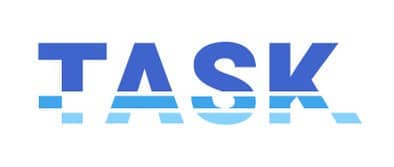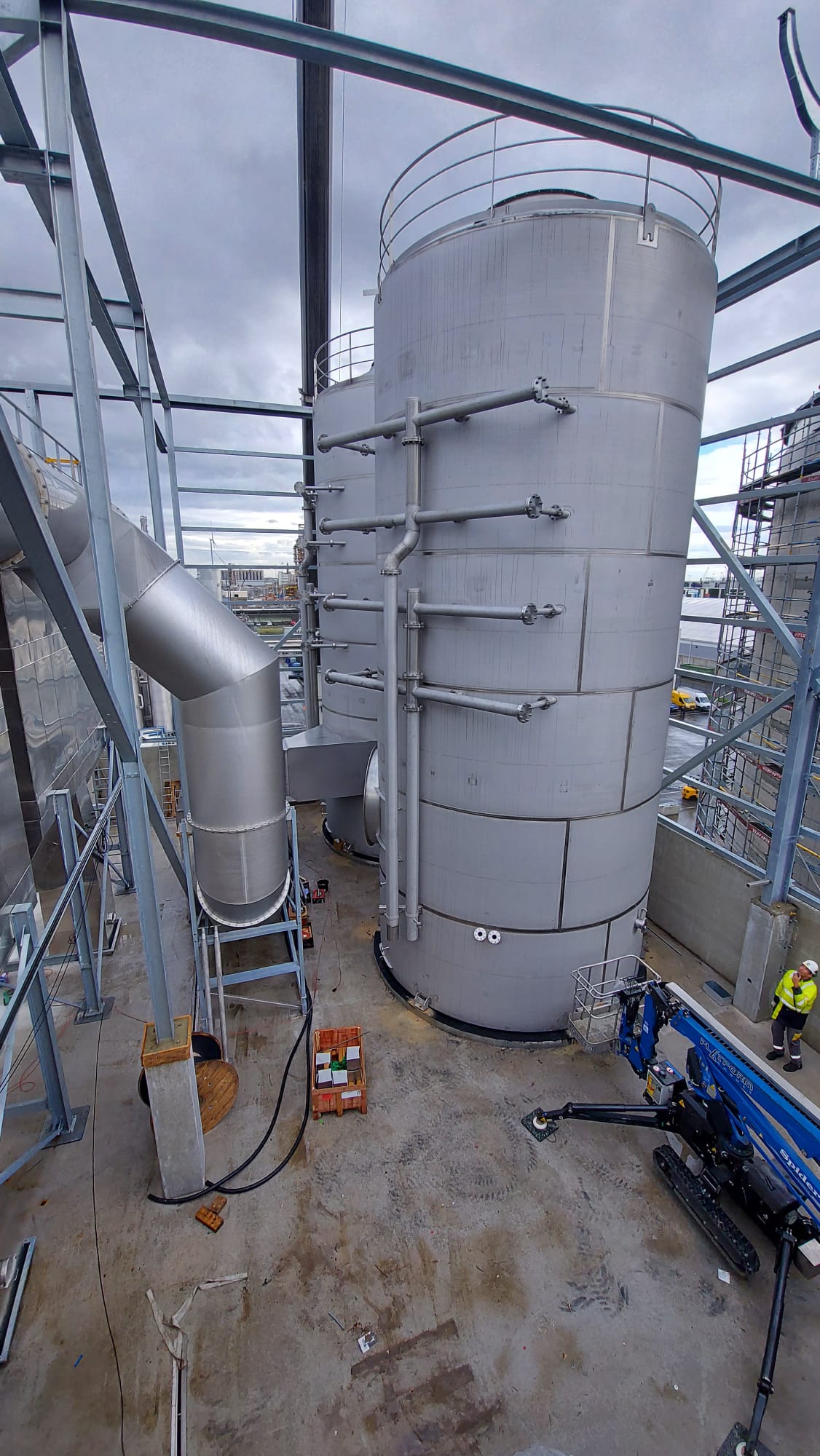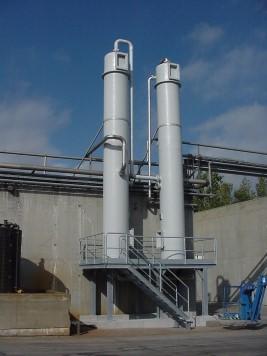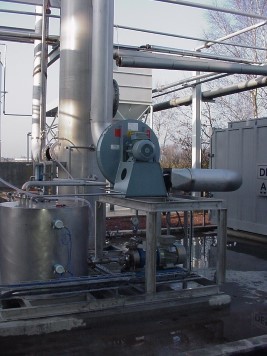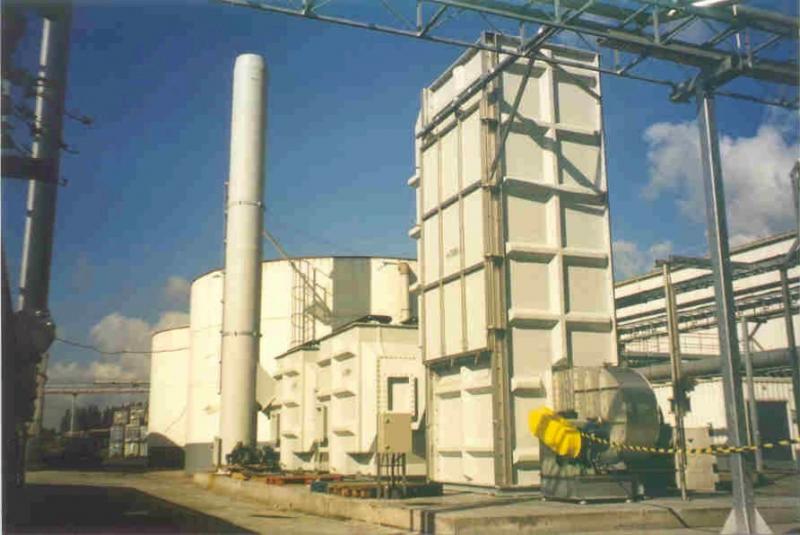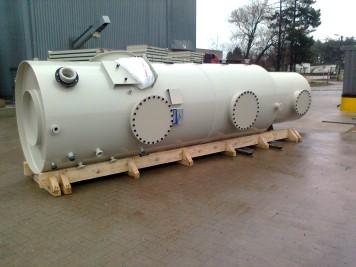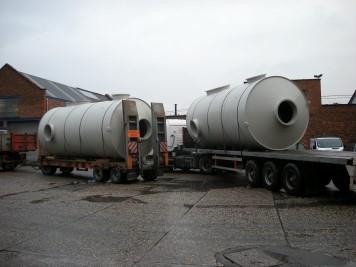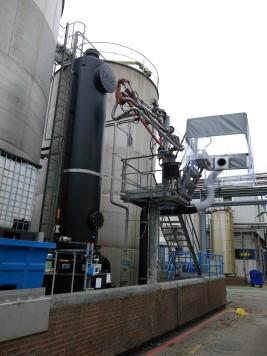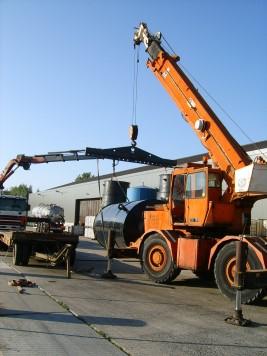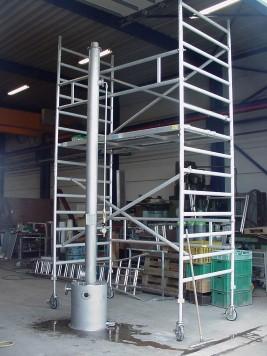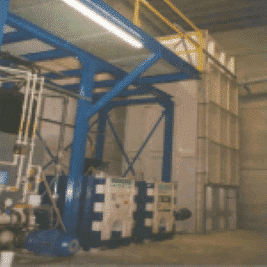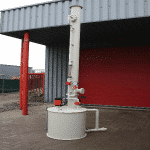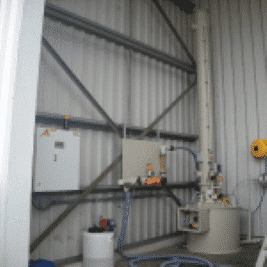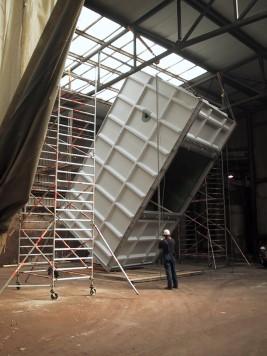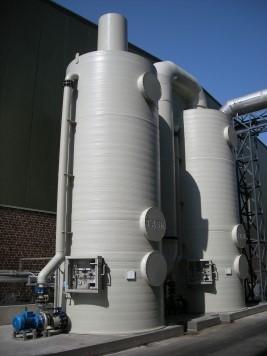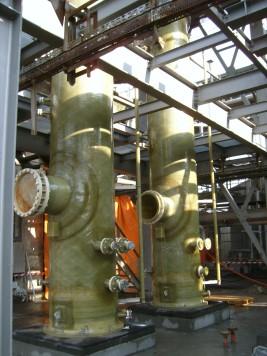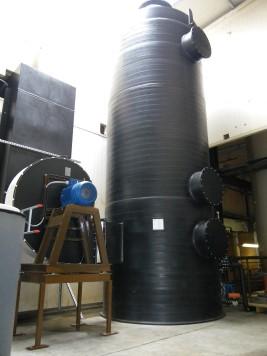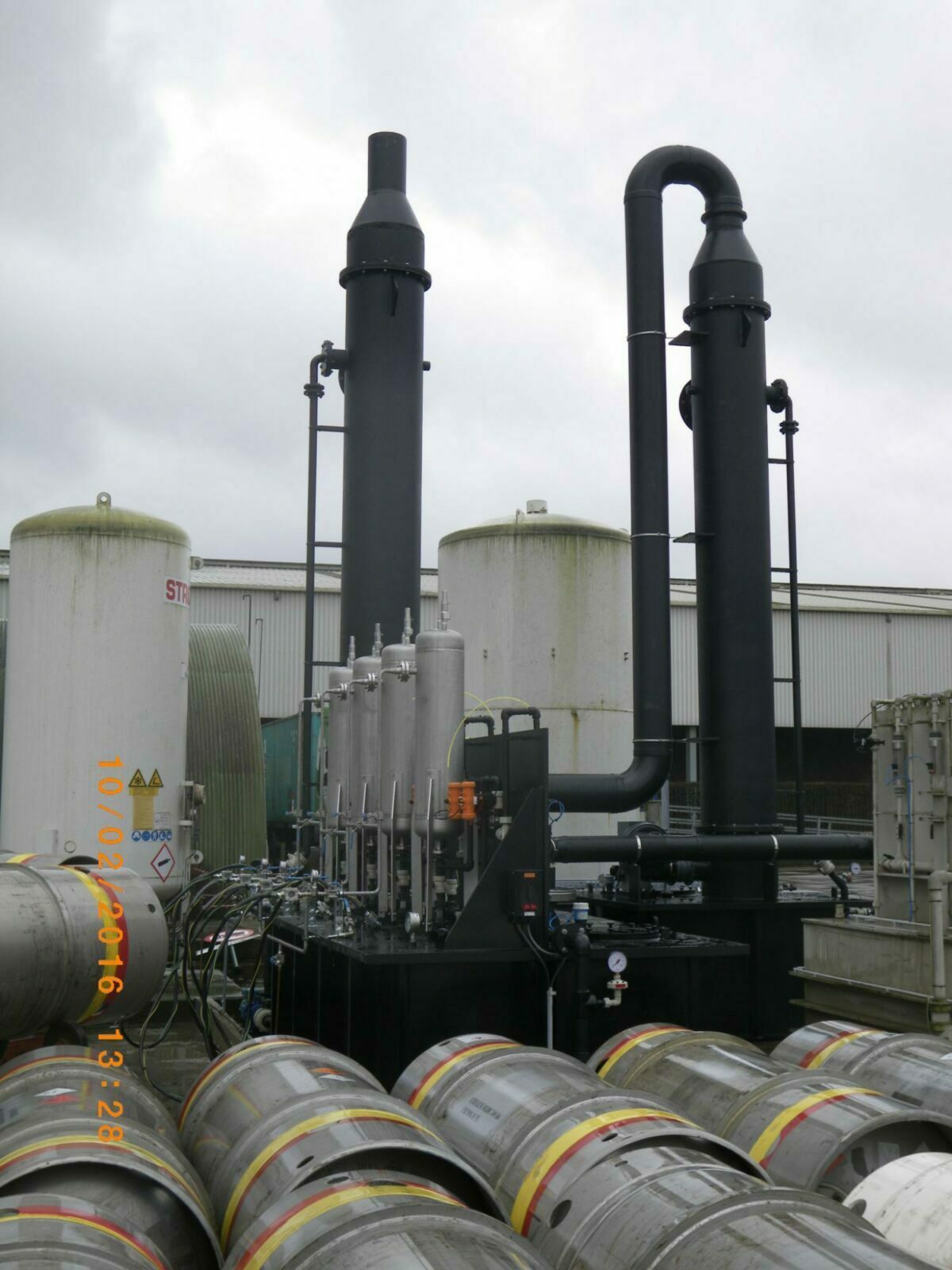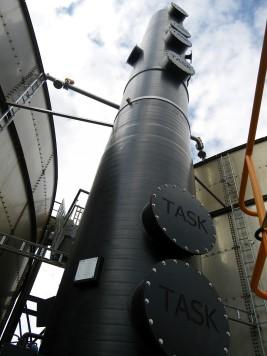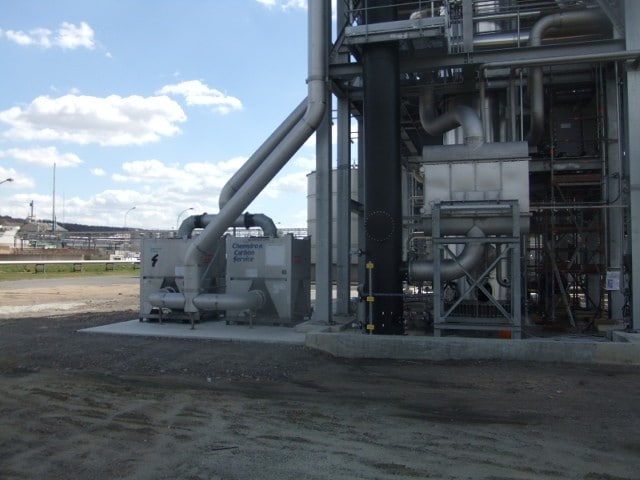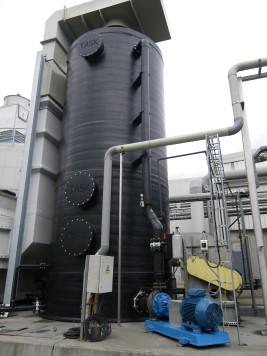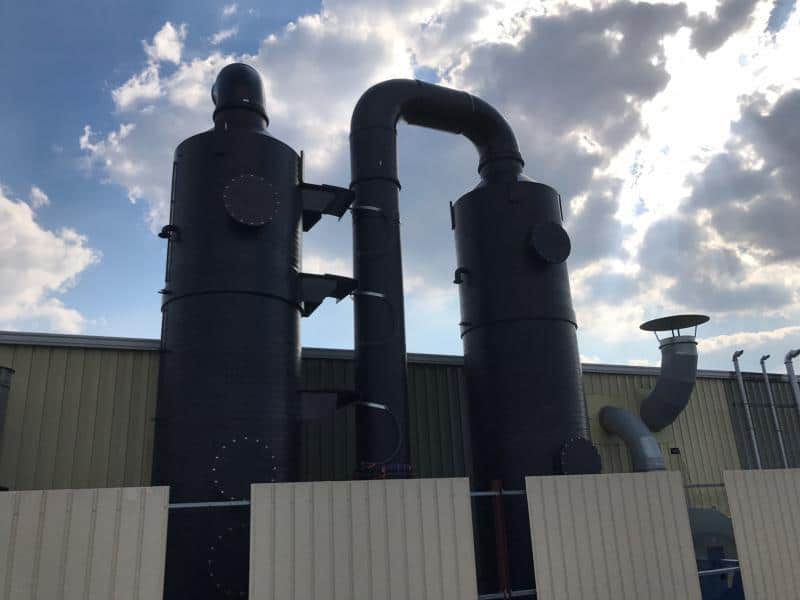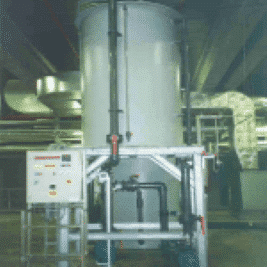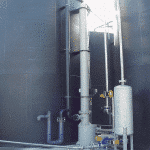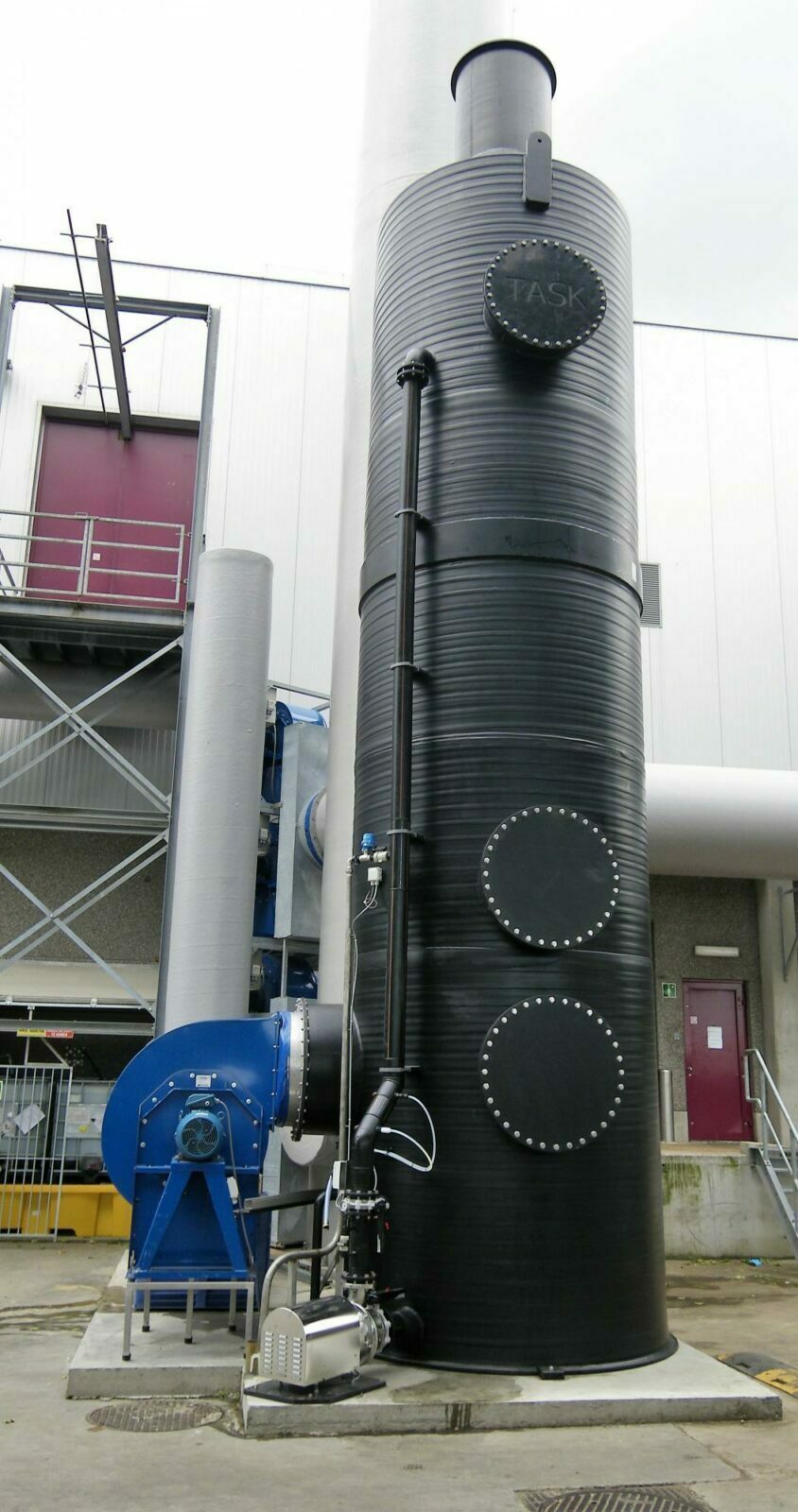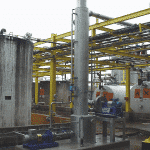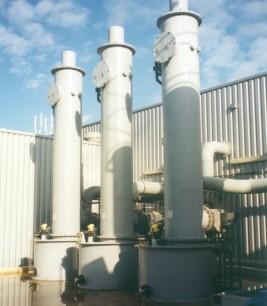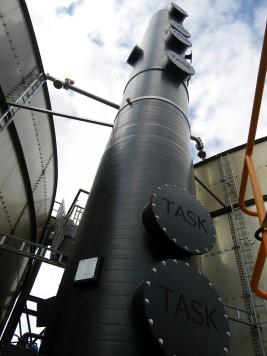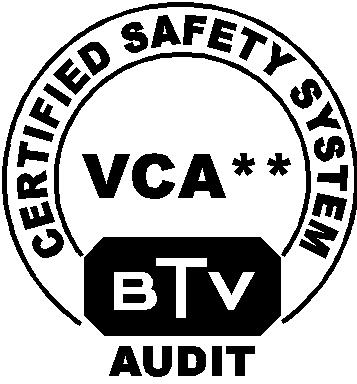Gas scrubbers or air scrubbers are one of the most widely used technologies for the treatment of industrial off gases. They are used for the separation of harmful and odorous components. Gas scrubbers are often called scrubbers, industrial air scrubbers or absorbers. These scrubbing towers can be built for both large and small flow rates (see also compact tank and lab scrubbers).
What are gas scrubbers?
In a scrubber gasses are washed or scrubbed with water. In other words, the contaminated gazeous emission flow is brought into contact with a cleaning liquid. This cleaning liquid is allowing to separate harmful of odorous components from the gas. These components are absorbed into the liquid. Inside the column there are filler bodies or packing to maximize the efficiency of the scrubber. The scrubbing liquid consists of water, with added chemicals.
A gas scrubber mainly consists of the following components:
- washing tower (packed column)
- packing (structured or loose, Pall rings, Raschig rings, …)
- droplet separator
- nozzle(s) or liquid distributor
- pump
- chemical dosing unit
- measuring and control equipment (pH, redox)
- water replenishment system
Components to separate out of industrial emissions are
- H2S (hydrogen sulfide)
- NH3 (ammonia)
- HCl (hydrochloric acid)
- SO2 (sulfur dioxide)
- RHS (mercaptans or thiols)
- CH2O (formaldehyde, formaline)
- amines
- phenol
- HNO3 (nitric acid)
- NOx (nitrogen oxide)
- EO (ethylene oxide), …
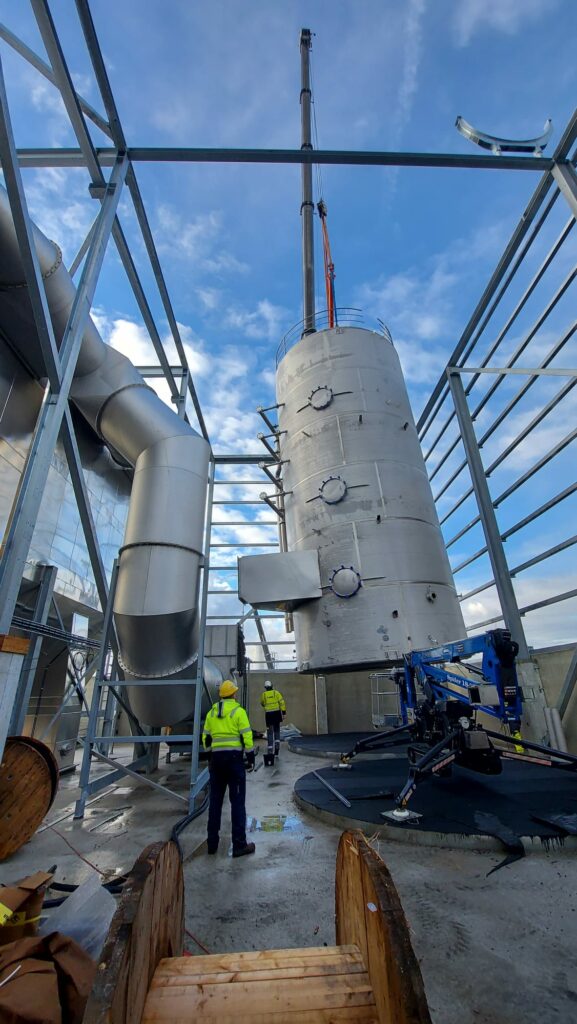
Custom-made gas scrubbers
Our gas scrubbers are always designed for the offered emission flow and can be adjusted to the customer’s needs. Each gas scrubber is designed in such a way, that it can always anticipate changes in the production process (both in terms of composition of the off-gases and in terms of flow rate), within certain limits.
What are the advantages of a gas scrubber?
- relatively simple and well controllable
- low energy consumption
- compact and space-saving
- predictable and guaranteed efficiency
- high separation efficiency
- low maintenance
- versatile
What are the disadvantages with gas scrubbers?
- waste water must be treated
- water and chemical consumption
- frost sensitive
- an excess of dust and/or grease in the emissions can clog the packing
- for some odour control applications, prior pilot tests may be advisable, in order to estimate the feasibility (see also pilot gas scrubbers)
In which industries gas scrubbers can be used?
- waste disposal and waste processing industry
- (petro)chemical industry
- pharmaceutical industry
- food industry
- animal feed
- fertilizer production and processing
- oil-processing industry
- electronics
- metal and surface treatment
In short, all industries emitting polluted air!
Heat recovery from gas scrubbers
Most types of gas scrubbers can optionally equipped with a heat recovery system. The recovered heat can be used to heat process water (see also heat exchangers). Such a heat recuperation system allows for considerable savings on energy costs. At the current energy cost it would be a pity to waste energy, generated in your production process. Of course, an existing air scrubbing installation can be equipped with a heat recovery system.
